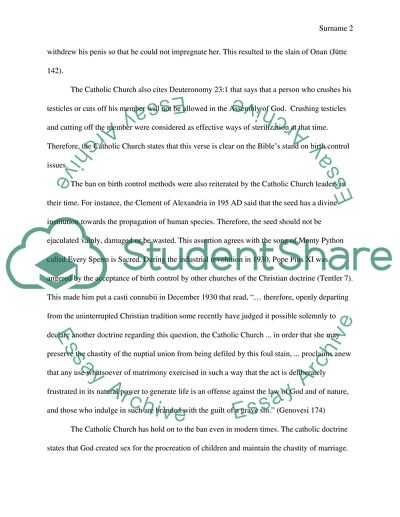Cite this document
(“Catholic Church and Artificial Birth Control Methods Research Paper”, n.d.)
Catholic Church and Artificial Birth Control Methods Research Paper. Retrieved from https://studentshare.org/religion-and-theology/1444098-analytical-research-paper-on-catholic-religion
Catholic Church and Artificial Birth Control Methods Research Paper. Retrieved from https://studentshare.org/religion-and-theology/1444098-analytical-research-paper-on-catholic-religion
(Catholic Church and Artificial Birth Control Methods Research Paper)
Catholic Church and Artificial Birth Control Methods Research Paper. https://studentshare.org/religion-and-theology/1444098-analytical-research-paper-on-catholic-religion.
Catholic Church and Artificial Birth Control Methods Research Paper. https://studentshare.org/religion-and-theology/1444098-analytical-research-paper-on-catholic-religion.
“Catholic Church and Artificial Birth Control Methods Research Paper”, n.d. https://studentshare.org/religion-and-theology/1444098-analytical-research-paper-on-catholic-religion.


